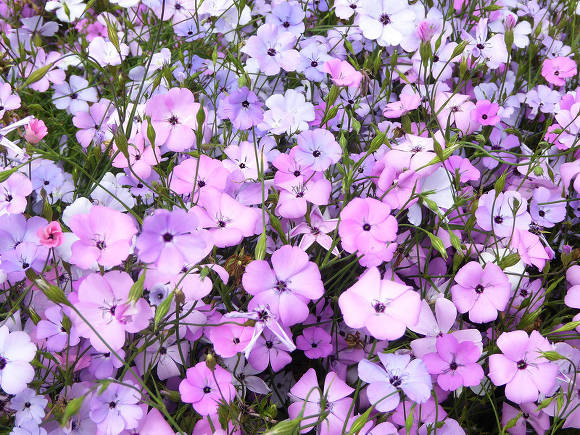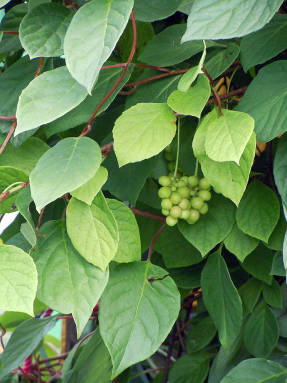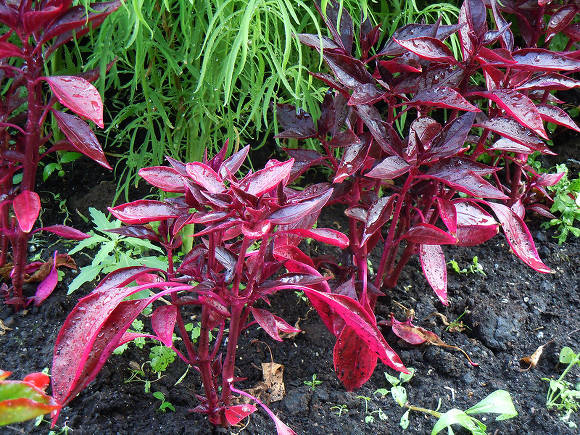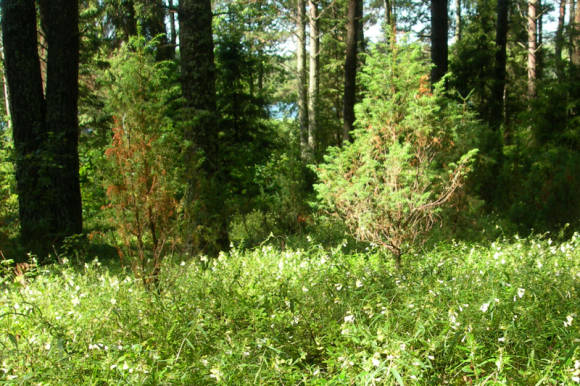Ever-flowering begonia (Begonia x semperflorens) is one of the most commonly grown and commercial plants. Such great popularity and wide distribution is due to the unpretentiousness of the plant, which is a popular annual in open ground and a popular indoor plant.

Currently, the group of ever-flowering begonias (Semperflorens Cultorum) includes a set of varieties obtained by crossing many types of begonias. All hybrids of this group are descended from nodule begonia (Begonia cucullata), once known asB. semperflorens... In 1821, the seeds of this species were accidentally brought along with other plants to the Berlin Botanical Garden from Brazil. The low bushes with pale pink flowers that grew out of them turned out to be very unpretentious. In 1878, this species was crossed with Schmidt's begonia (Begonia schmidtiana)with small velvety leaves and almost year-round white or pink flowers. The interspecific hybrid turned out to be medium in size, with glossy foliage and pale pink flowers. A little later, another species was introduced into crossing, Retzla begonia (Begonia roezlii), which gave the hybrids dark pink and even red flowers. In the 1890s, a mutation with bronze leaves was identified in France, and variegated forms were selected at the same time. At the turn of the 20th century, crossing with small begonia(Begonia minor) semi-double varieties were obtained. When breeding ever-flowering begonias, other species were also used. Many modern varieties are heterotic hybrids of the first generation F1 (for the first time such a hybrid was obtained back in 1894).
The flowering of ever-flowering begonias is very long. Flowers can be double or non-double, in all shades of red, pink and white. There are large-flowered varieties with flowers up to 7.5 cm in diameter. Some varieties impress not with flowering, but with shiny leaves, thanks to which ever-flowering begonia is often called Wax begonia. The leaves are green or bronze in color, there are very beautiful variegated varieties. Compact begonias were bred, only 8-15 cm high. At the same time, there are quite tall ones, up to 50 cm. There are ampelous cultivars that are grown in hanging baskets.
 |  |
When planting in a flower bed, it is always possible to select varieties according to the size, color and texture of flowers and leaves, creating whole compositions from some ever-flowering begonias, or in combination with other plants. These techniques are widely used in urban greening, planting colorful carpet flower beds. In single specimens, ever-flowering begonias are quite inconspicuous, but planted in large groups, they look very decorative. The indisputable advantage of these begonias is their good resistance to adverse weather conditions, diseases and pests. They are able to maintain decorativeness in hot sunny weather, and heavy heavy rains, bloom profusely from spring to the very frost.

Ever-flowering begonias are mainly used as annual ornamental plants for planting in open ground. Although in fact they are herbaceous perennials, winter-hardy up to -9оС. At home, they are able to maintain decorativeness for several years and bloom almost all year round. Some varieties can rival indoor begonias like Elatior and Lorrain in beauty. (Cm. Winter blooming begonias - Elatior and Lorrain).
Room care
Lighting... Give the ever-flowering begonias as much light as possible. These varieties are able to tolerate direct midday sunlight outdoors. If the plant is kept on the balcony in summer, then there is no need to protect it from the sun.If the pot is in the room, then provide the plant with good ventilation so that the leaves do not overheat in the sun through the window panes, shade slightly on the southern windows. In winter, find the brightest spot and provide additional bright artificial lighting with at least 12 hours of daylight hours. With a lack of light, the plants stretch out strongly, lose some of the leaves and do not bloom.
Read more in the article Lighting for indoor plants.
Temperature. The optimum temperature for keeping begonias in room conditions is + 15 + 20 ° C, they do not like heat. In winter, with a lack of light, cooler conditions are desirable (+ 12 + 15 ° C). Protect plants from cold drafts and negative temperatures!
Air humidity... Optimum humidity for begonias is about 50%. In winter, when the heaters are on, humidification measures may be required. But direct spraying on the leaves should be avoided.

Watering regular, after the top layer of the soil has dried. When waterlogged, begonias can rot. You should also not completely bring the lump to complete dryness.
Read more in the article Watering rules for indoor plants.
Top dressing. Use complex fertilizers with a high phosphorus content (10-20-10) in a half dosage during the period of active growth and flowering.
Soil and transplants. Begonias grow well in small pots. After a few years, the stems stretch out and become bare, but the plants easily renew themselves from the cuttings. Usually they need no more than 1-2 transplants during their entire life.
If necessary, when the roots are tightly wrapped in a lump, carefully transfer the plant into a slightly larger pot with fresh soil. The begonias are not demanding on the composition of the soil, but it must be loose, porous, do not retain water and dry out quickly after watering. For planting, a ready-made slightly acidic peat universal soil or soil for begonias with the addition of perlite is suitable.
Read more in the article Transplanting indoor plants.
Reproduction... Many modern varieties are first generation F1 hybrids. Their seeds can be bought and grown from them begonias, but in the future, the variety can be propagated and preserved only in a vegetative way - with stem or leaf cuttings. These varieties are often sterile, do not produce viable seeds, and if seeds are set occasionally, they do not ensure the inheritance of maternal traits.
Seeds are sown early, in January-February, for the normal development of seedlings, they are provided with illumination. The seeds are small and light-sensitive, they are sown on the surface of the prepared soil, the box is covered with glass or film to maintain high humidity. Germinated in the light at a temperature of about + 20 + 24oC. Seedlings appear in 2-3 weeks, they are gradually accustomed to indoor conditions. Plants can be planted outside until the threat of recurrent frosts disappears. Flowering occurs 12-20 weeks after germination, depending on the variety.

Stem cuttings are taken from mature plants, preferably in spring or summer. They are rooted in water or loose soil, consisting of equal shares of peat and perlite, in a greenhouse, using root formation stimulants. In this way, you can save the variety you like without digging out the plant in the fall. You can also grow from leaf cuttings using a technology similar to growing rhizome begonias, but this method is much longer.
Read more in the article Cutting indoor plants at home.
If a pot with a plant stood in the open air in the garden in the summer, then it is necessary to bring it home in time, before the autumn cold snaps, which can cause fungal diseases. And be sure to treat it from possible pests.
Pruning. Ever-flowering begonias in good light grow in compact, dense bushes, and formative pruning is not required.Over time, the lower part of the stems becomes bare, and with a lack of light, the stems stretch out, then it is better to renew the plant by rooting the apical cuttings.
Pests and diseases... These begonias are quite disease resistant and are not susceptible to pest attacks. But at home, especially with a lack of light and non-compliance with the watering regime, they can be affected by fungal diseases. At the same time, the leaves and stems are covered with dark spots. If signs of rot are found, remove the affected parts of the plant, change the conditions of detention and treat with fungicides.
With insufficient watering in hot weather, powdery mildew can be affected - extensive dull white spots form on the leaves. Treat with powdery mildew fungicides. If pests are found (aphids, scale insects, mealybugs, thrips, whiteflies), treat with insecticides, preferably systemic ones. If a spider mite is found, treatment with acaricides is necessary.
Read more about plant protection - in the article Houseplant pests and control measures.

Possible growing problems
- With a lack of light, begonias stretch out strongly, the leaves turn yellow and fall off, there is no flowering.
- When dry, especially in hot weather, they are prone to powdery mildew.
- With excessive watering or too cool content, rot damage is possible.
- With a high dry air, leaves curl and buds fall off, the plant is strongly affected by a spider mite.







